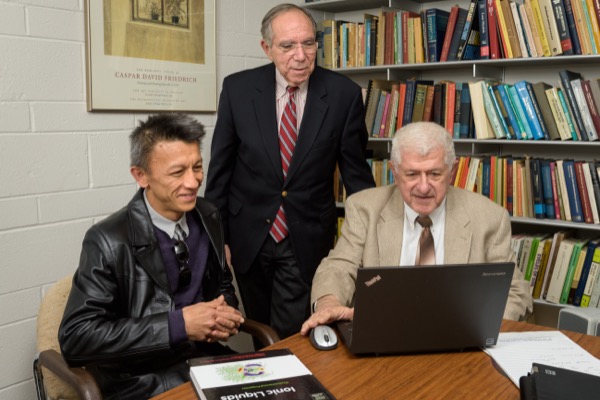
Reducing the relics of war
Grant to address fate of munitions constituents in the environment
9:02 a.m., Dec. 1, 2015--The Massachusetts Military Reservation (MMR) was established in 1911 as a field artillery firing and field training site. Over the next several decades, MMR, which occupies 34 square miles on upper Cape Cod, was used for a variety of military operations.
No one guessed — in 1911 or even years later during the Cold War — that those activities would contaminate an aquifer which, as of the early 1980s, provided drinking water to some 200,000 year-round and an additional 300,000 seasonal residents of the four towns surrounding MMR.
Research Stories
Chronic wounds
Prof. Heck's legacy
By the late 20th century, it had become clear that munitions constituents — which include explosives, propellants and metals — posed an environmental hazard not only on Cape Cod but at sites across the U.S., giving rise to significant federal support for research to address the problem.
A team of faculty in the University of Delaware’s Department of Civil and Environmental Engineering recently received a four-year, $1.75 million grant from the Strategic Environmental Research and Development Program (SERDP) to measure and predict the rate at which these materials degrade.
The project, “Natural and Enhanced Rate and Capacity of Abiotic Reduction of Munition Constituents,” is the third SERDP-funded research grant for the group over the past 14 years.
In the first project, led by Herbert E. Allen, who is now emeritus professor, the researchers developed computational models to predict how rapidly munition constituents move through the environment, a process that varies depending on whether the material binds to soils or remains soluble.
Dominic Di Toro, the Edward C. Davis Professor of Civil and Environmental Engineering, led the second project, which provided a method to predict environmental properties from molecular structure only.
They used a quantum chemical program developed by Stanley I. Sandler of UD’s Department of Chemical and Biomolecular Engineering to provide the “data” from which the properties were modeled. The method can aid the development of new munitions with less environmentally damaging properties.
The new research, led by Pei Chiu, professor of civil and environmental engineering, and including Allen and Di Toro, is part of an overall effort to develop more cost-effective approaches to long-term site management.
The UD team will develop ways to estimate the contribution and impact of abiotic transformation on contaminant fate under both natural and engineered conditions. The basic idea is to use the reactive iron and carbon compounds naturally occurring in soil and groundwater to help break down contaminants.
The researchers will also determine how abiotic transformation can be enhanced to accelerate degradation of munitions constituents in place, so that the munitions don’t need to be excavated.
“The models developed under the previous grants will provide a theoretical framework for the new research,” says Chiu. “At the same time, the findings of our current work will be fed back into the model to improve its predictive capabilities.”
Di Toro says that a calibrated and validated predictive model will permit practitioners to develop designs for more cost-effective long-term remediation.
“The results of the proposed research will help confirm that enhanced abiotic attenuation can be a viable long-term remedial option,” he adds.
Article by Diane Kukich
Photo by Evan Krape








